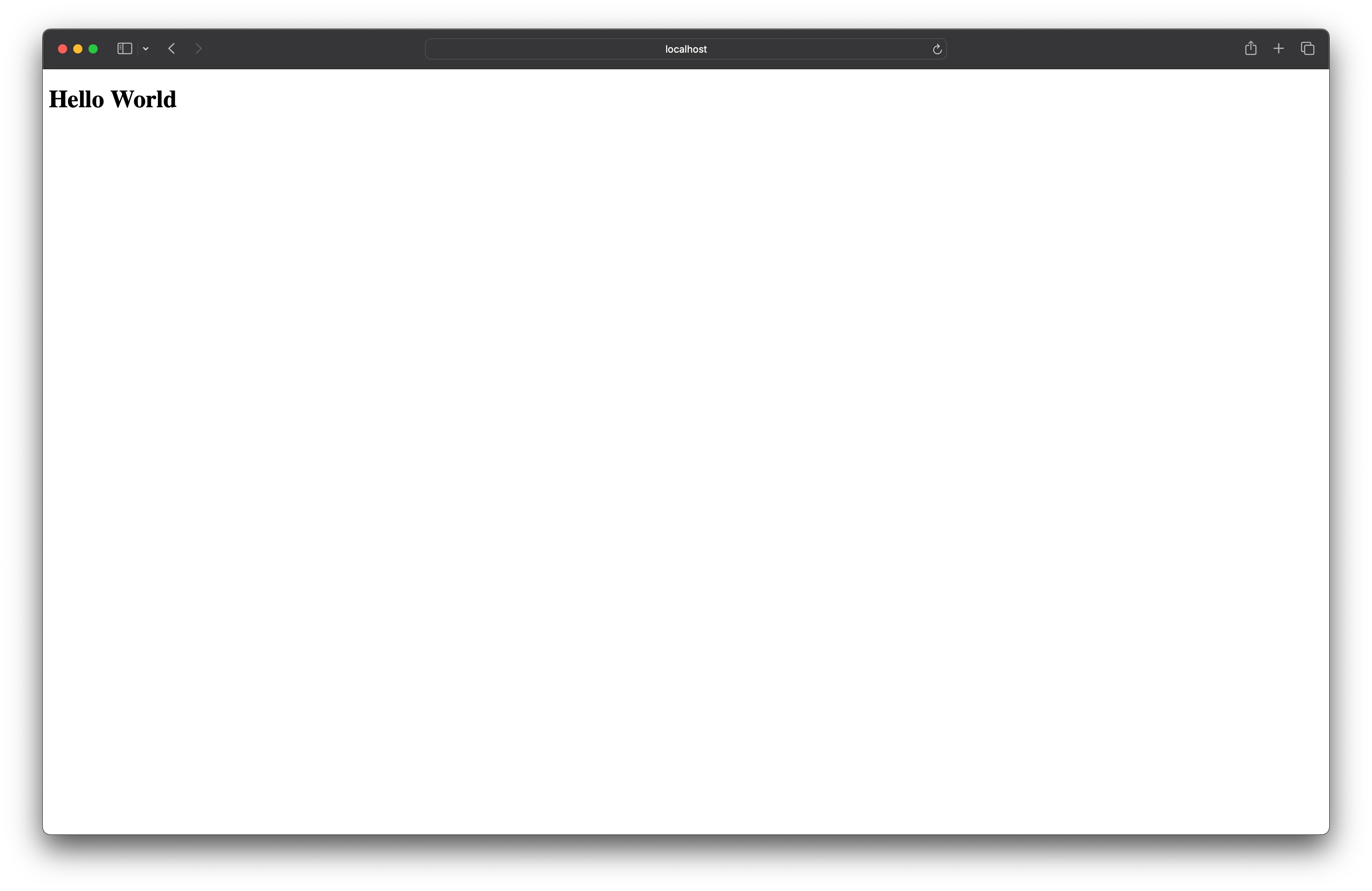Quick Start
In this quick start you’ll go from zero to request/response in seconds and deploy to production in minutes!
Create a new project by running the following command, replacing my-project-name with your project name:
npx create-rwsdk my-project-namepnpx create-rwsdk my-project-nameyarn dlx create-rwsdk my-project-nameStart developing
Section titled “Start developing”Install the dependencies
Section titled “Install the dependencies”cd my-project-namenpm installpnpm installyarn installRun the development server
Section titled “Run the development server”RedwoodSDK is just a plugin for Vite, so you can use the same commands to run the development server as you would with any other Vite project.
npm run devpnpm run devyarn run devVITE v6.2.0 ready in 500 ms
➜ Local: http://localhost:5173/➜ Network: use --host to expose➜ press h + enter to show helpAccess the development server in your browser, by default it’s available at http://localhost:5173, where you should see “Hello World” displayed on the page.

How exciting, your first request/response in RedwoodSDK!
Your first route
Section titled “Your first route”The entry point of your webapp is src/worker.tsx, open that file in your favorite editor.
Here you’ll see the defineApp function, this is the main function that “defines your webapp,” where the purpose is to handle requests by returning responses to the client.
import { defineApp } from "rwsdk/worker";import { route, render } from "rwsdk/router";
import { Document } from "@/app/Document";import { Home } from "@/app/pages/Home";
export default defineApp([ render(Document, [route("/", () => new Response("Hello, World!"))]),]);You’re going to add your own route, insert the "/ping" route handler:
import { defineApp } from "rwsdk/worker";import { route, render } from "rwsdk/router";
export default defineApp([ render(Document, [ route("/", () => new Response("Hello, World!")), route("/ping", function () { return <h1>Pong!</h1>; }), ]),]);Now when you navigate to http://localhost:5173/ping you should see “Pong!” displayed on the page.
Deploy to production
Section titled “Deploy to production”RedwoodSDK is built for the Cloudflare Development Platform. You can deploy your webapp to Cloudflare with a single command:
npm run releasepnpm run releaseyarn run releaseThe first time you run the command it might fail and ask you to create a workers.dev subdomain. Do as indicated and go to the dashboard and open the Workers menu. Opening the Workers landing page for the first time will create a workers.dev subdomain automatically